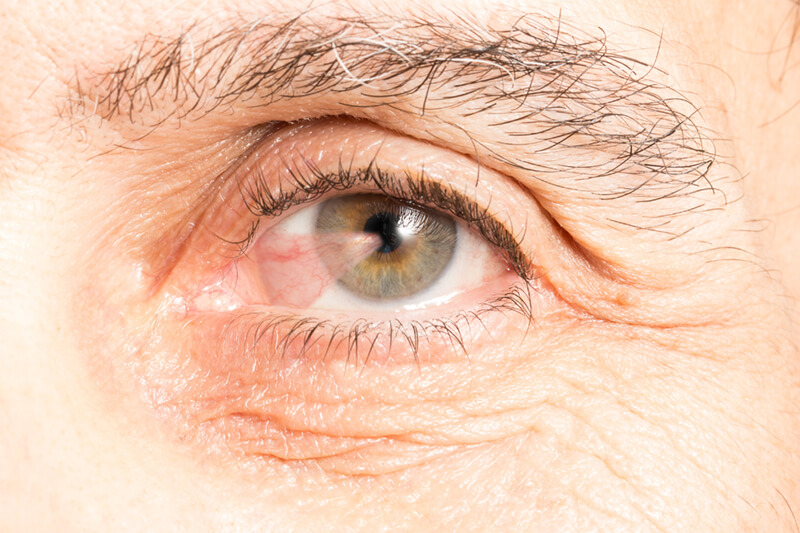Pterygium
A pterygium (pronounced tur-IJ-ee-um) is a triangular shaped growth of pink, fleshy tissue on the white part of the eye. It is a common eye condition, sometimes referred to as “surfer’s eye” because it often affects people who spend a lot of time outdoors, such as surfers, but it is also more likely to affect farmers, fisherman and those who live near the equator.
This non-cancerous growth may remain small or grow large enough to cover the pupil and interfere with vision. A pterygium can sometimes develop from another kind of growth called a pinguecula, which is a yellowish patch or bump that appears on the conjunctiva, near the cornea.
A pterygium may affect one or both eyes. Although not considered a serious condition, it can lead to bothersome symptoms, such as redness and swelling and you may feel as though you have something in your eye and in that case it requires medical treatment. In some cases, if it becomes large, extending far enough on the cornea, it can affect the shape of the cornea and cause astigmatism.
Prolonged exposure to ultraviolet light is believed to be a primary cause of this type of growth. Unlike many eye conditions that develop as we age, pterygium is most prevalent among young adults between the ages of 20 to 40.

Symptoms & Diagnosis
The primary symptom is the raised fleshy tissue on the inner or outer edge of the corner that is often painless. Sometimes however, pterygium may lead to the following symptoms:
- Blurred vision
- Itching and/or burning
- Feeling of having foreign object in your eye
Your OCB eye doctor can diagnose a pterygium upon physical examination. Usually, special diagnostic tests are not needed.
Care for a Pterygium
Typically a pterygium does not require treatment unless the growth becomes red and irritated. In that case your OCB eye doctor may recommend lubricating eyedrops,ointments or possibly a mild steroid eye drop to reduce inflammation.
If the pterygium interferes with your vision, it can be surgically removed as an out-patient procedure. Patients may elect to have it removed for cosmetic concerns.
It is important to keep in mind that a pterygium recurs in between 30 and 40 percent of cases, after surgical removal. Your OCB eye doctor may perform an additional procedure or prescribe medications to help prevent recurrence.
You can also take steps to help prevent recurrence. These include protecting your eyes from excessive UV light exposure with sunglasses that wrap around the side of your eyes and also protecting your eyes from dry, dusty conditions.
